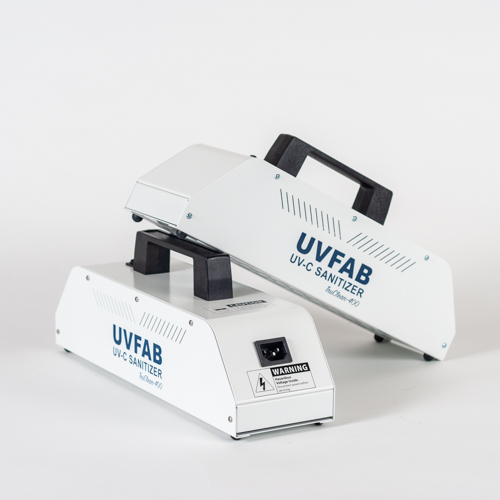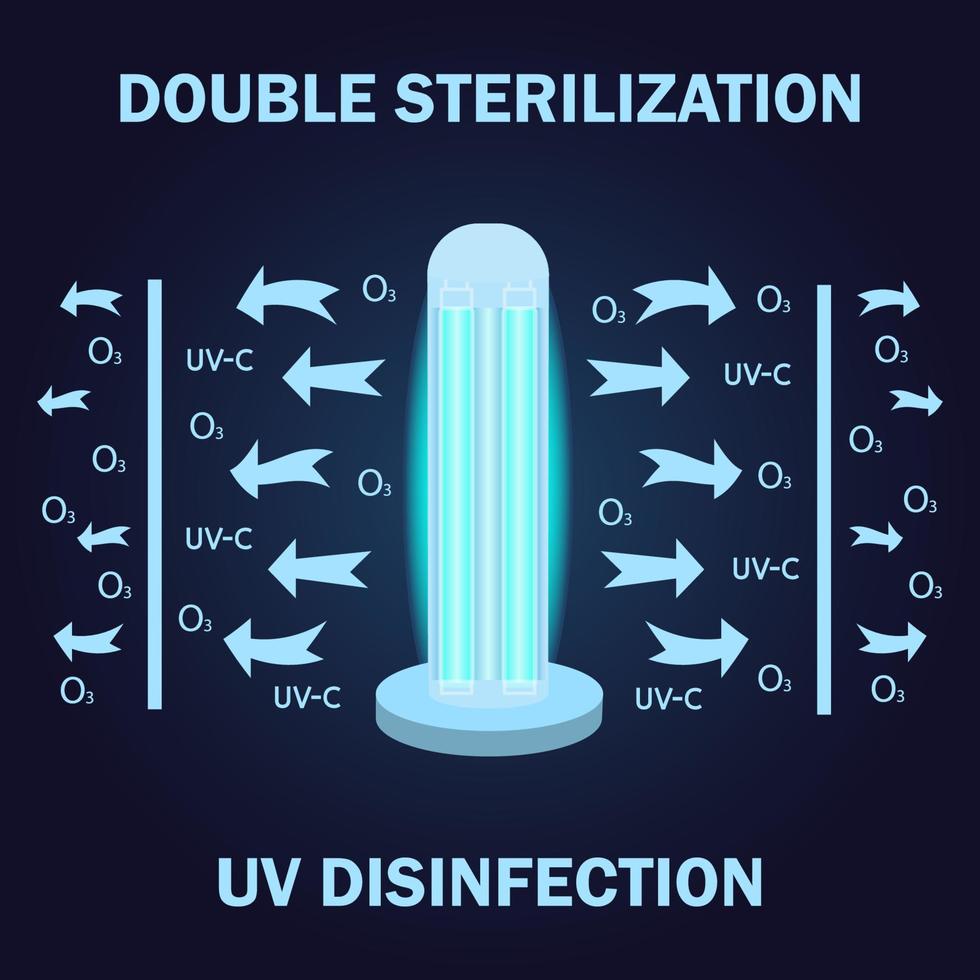Future-Proofing Your Space: Integrating UV Surface Disinfection for Ongoing Protection
Future-Proofing Your Space: Integrating UV Surface Disinfection for Ongoing Protection
Blog Article
UV Disinfection: The Cutting-Edge Technology Transforming Sanitation Practices
In the realm of hygiene practices, one modern technology has actually become a game-changer: UV disinfection. With its ability to eradicate dangerous pathogens, this advanced technology is changing the means we approach cleanliness and health. However how does UV sanitation job, and what are the advantages it provides? From medical care settings to food handling, UV disinfection is making its mark in different markets. In this discussion, we will certainly check out the ins and outs of this transformative modern technology and expect its encouraging future.
How UV Sanitation Works
UV sanitation functions by utilizing ultraviolet light to damage or inactivate microorganisms, providing a highly reliable and chemical-free approach of cleanliness. This technology harnesses the power of short-wavelength UV-C light, which is qualified of damaging the DNA and RNA of microbes, therefore rendering them not able to create and recreate injury.
The process starts with the setup of UV sanitation systems, which contain UV lamps that discharge UV-C light. These lights are purposefully placed in areas where microbial contamination is a worry, such as water therapy plants, healthcare facilities, laboratories, and food handling centers.
When microbes are revealed to UV-C light, the photons penetrate their cell wall surfaces and get to the DNA and RNA inside. The high-energy UV-C photons interfere with the genetic material by developing bonds between nearby nucleotides, bring about the formation of thymine dimers. These dimers prevent the microorganisms from duplicating, providing them harmless.
UV sanitation is very reliable against a vast array of microorganisms, including infections, microorganisms, and bloodsuckers. It is especially effective against waterborne pathogens like E. coli, Giardia, and Cryptosporidium. Furthermore, UV disinfection is a chemical-free technique, getting rid of the requirement for potentially dangerous anti-bacterials and reducing the risk of hazardous disinfection by-products.
Advantages of UV Disinfection
UV disinfection uses many benefits in the field of hygiene, making it an extremely chosen approach for efficiently removing dangerous microorganisms. Unlike conventional sanitation methods that count on chemicals, UV disinfection makes use of ultraviolet light to destroy the DNA of microbes, making them incapable to replicate and create infections.

UV disinfection is likewise very functional in its applications. It can be made use of in numerous setups, consisting of healthcare facilities, institutions, food handling facilities, and water treatment plants. UV disinfection systems can be easily integrated right into existing cleanliness practices, supplying an extra layer of security against transmittable conditions.
Along with its effectiveness and versatility, UV sanitation is additionally eco-friendly. It does not produce any dangerous results or residues, making it a sustainable and safe method for hygiene - uv surface disinfection. In addition, UV sanitation needs very little maintenance and has a long life-span, leading to price financial savings in the future.
UV Disinfection in Medical Care Setups
In medical care settings, UV sanitation has emerged as an innovative method for effectively getting rid of damaging microbes. Making use of UV light to disinfect surfaces and devices has actually gained appeal as a result of its capacity to provide an additional layer of defense versus virus. UV disinfection works by emitting ultraviolet light at a details wavelength that is deadly to germs, viruses, and various other microorganisms. This modern technology uses a number of advantages in healthcare settings.
First of all, UV sanitation is a non-chemical method, making it an eco-friendly choice contrasted to traditional disinfection approaches that typically involve using rough chemicals. The use of UV light removes the need for chemical disinfectants, minimizing the threat of damaging deposit or chemical direct exposure to both patients and health care employees.
Additionally, UV disinfection is highly efficient in eliminating a wide range of bacteria, consisting of drug-resistant germs such as MRSA and C. difficile. It gives a regular and trustworthy sanitation procedure, ensuring that all surfaces and tools are thoroughly disinfected, even in hard-to-reach locations.

UV Disinfection in Food Processing
The application of UV disinfection expands past health care settings and locates substantial value in the world of food processing. uv surface disinfection. UV disinfection modern technology is coming to be progressively preferred in the food sector because of its ability to effectively remove dangerous microorganisms and boost food security
Among the major benefits of UV disinfection in food processing is its ability to target a vast array of microorganisms, including germs, mold and mildews, and infections. By utilizing UV light at certain wavelengths, it is feasible to interfere with the DNA and RNA of these virus, providing them incapable to recreate or trigger harm. This innovation can be related to different phases of the food processing chain, consisting of surface area sanitation, devices sanitation, and water treatment.
UV disinfection offers try here a non-thermal and chemical-free technique of sterilizing food items. Unlike standard disinfection methods that count on chemicals or heat, UV technology does not leave any deposit or change the taste, texture, or dietary value of the food. This makes it a perfect solution for sectors that call for strict adherence to quality criteria.
In addition, UV disinfection systems are simple to set up and run, calling for minimal maintenance. They can be integrated right into existing processing lines without creating considerable interruptions to the production company website process. Additionally, UV systems have a fast treatment time, enabling constant handling and minimizing downtime.
The Future of UV Disinfection

One location where UV disinfection is expected to make significant innovations remains in the field of health care. With the increase of antibiotic-resistant microorganisms and the demand for a lot more reliable sanitation approaches, UV light has the potential to play a crucial function in minimizing healthcare-associated infections. UV sanitation systems can be made use of to sanitize surface areas, tools, and also the air in medical care centers, helping to avoid the spread of unsafe virus and boost person security.
Another industry that could benefit from improvements in UV sanitation modern technology is the food industry. UV light has already proven to be a reliable approach for sanitizing food and lowering the danger of foodborne health problems. As innovation boosts, we can expect to see much more cost-efficient and reliable UV sanitation systems being executed in food processing plants, making sure that the food we take in is risk-free and free from hazardous bacteria.
Verdict
To conclude, UV sanitation is a sophisticated innovation that is changing sanitation techniques in health care setups and food handling. By utilizing UV light to kill or shut off microorganisms, it provides countless benefits such as performance, safety, and effectiveness. With ongoing advancements in this area, additional reading UV sanitation holds terrific potential for the future of cleanliness, giving a sustainable and reputable solution for preserving tidy and hygienic settings.
UV disinfection is a chemical-free approach, removing the need for possibly harmful disinfectants and minimizing the risk of harmful disinfection spin-offs.
Unlike typical disinfection techniques that count on chemicals, UV disinfection uses ultraviolet light to ruin the DNA of bacteria, rendering them incapable to reproduce and cause infections. Unlike conventional sanitation techniques that depend on chemicals or warmth, UV modern technology does not leave any deposit or alter the taste, texture, or nutritional value of the food. As modern technology boosts, we can anticipate to see more cost-efficient and efficient UV sanitation systems being applied in food handling plants, making sure that the food we take in is risk-free and totally free from harmful bacteria.
In conclusion, UV disinfection is an advanced modern technology that is changing cleanliness techniques in medical care settings and food handling.
Report this page